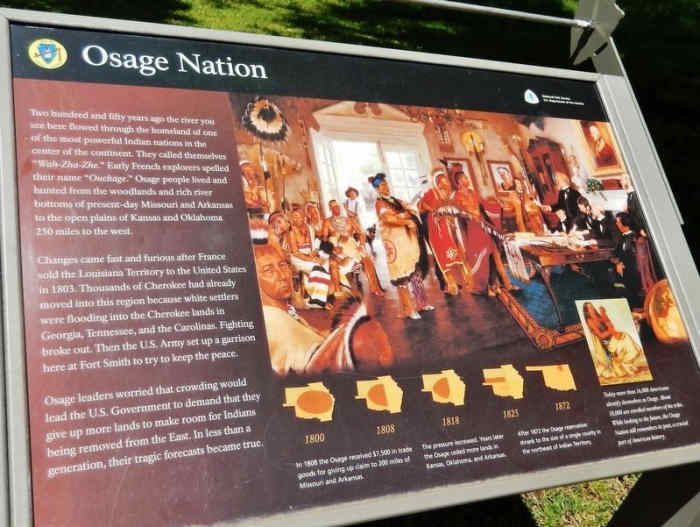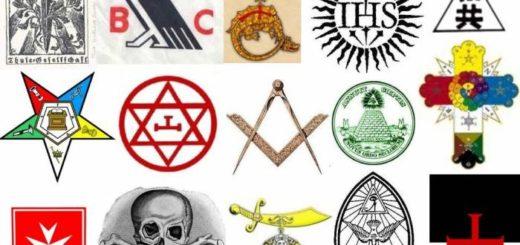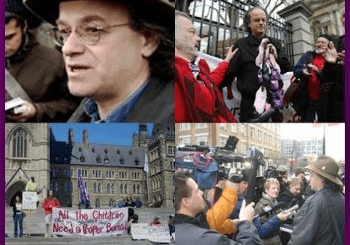Guardians & Murdered Wards: FBI Dropped the Ball on This One Letting the Massive Numbers of Perpetrators Get Away With Murder
Guardians & Murdered Wards
I pulled some of the guardian papers and there was this little booklet that came out. It had a little fabric cover. All it was was essentially identifying the name of a guardian and which Osage they were in charge of. And when I opened up the book, I could see the name of the guardian and when I began to look at the names of the Osage under them I could see written next to many of them simply the word “Dead. Dead. Dead.” It was almost like a ledger; it was like this forensic, bureaucratic accounting.
But when you’re looking at it, you’re beginning to realize you’re looking at hints of a systematic murder campaign, because there’s no way all these people died in a span of just a couple years. It defied any natural death rate. The Osage were wealthy, they had good doctors. … And then when you begin to look into each of those individual cases, you start to find trails of evidence suggesting poisonings, a murder. You start to try to trace the money … and where the wealth went. And what you begin to discover is something even more horrifying than the bureau ever exposed.
Comment: And it STILL hasn’t been Exposed IS MY POINT. The FBI only convicted Burkhart, Nephew, and Hale, Mastermind, and a Rogue Drifter who murdered as well. The VAST MAJORITY OF GUARDIAN KILLERS WERE NEVER ARRESTED , PROSECUTED or Convicted and their children inherited this wealth-by-murder. Time for these Murders to be investigated and the land Returned to their rightful owners-The OSAGE. My guess is that a lot of these “guardians” were politically connected to the Racist Establishment in D.C. who are connected to the British Empire via the CIA and British Intelligence Agencies who share information and even the same office spaces at times.
Comment: Kinda obvious ain’t it that the Guardians were murdering their wards. Plus the outlaws resided in this barren land of the once poorest of the poor so they weren’t normal law abiding people but conmen, killers, robbers, etc. Burkhart later robbed a bank. After he got out of jail he robbed Osage family. He was a cold hearted Psychopath like his uncle Hale.
jihttps://www.kunc.org/npr-news/2017-04-17/in-the-1920s-a-community-conspired-to-kill-native-americans-for-their-oil-money
Comment: The natives were not gangstalked but they were DEFINITELY TARGETED INDIVIDUALS.
United States and Osage Tribe Announce $380 Million Settlement of Tribal Trust Lawsuit
For Immediate Release
WASHINGTON – The United States has reached a final settlement of a long-running lawsuit by the Osage Tribe of Oklahoma regarding the United States’ accounting and management of the tribe’s trust funds and non-monetary trust assets. Ignacia S. Moreno, Assistant Attorney General of the Justice Department’s Environment and Natural Resources Division; the Interior Department’s Deputy Secretary David J. Hayes, Solicitor Hilary C. Tompkins, and Bureau of Indian Affairs Director Michael S. Black; the Treasury Department’s General Counsel George W. Madison, and the Osage Tribe’s Principal Chief John Red Eagle and other tribal officials commemorated the settlement during a ceremony at the Department of Interior’s headquarters in Washington today.
“This historic settlement resolves with finality long-standing trust accounting and trust management claims by the Osage Tribe,” said Assistant Attorney General Moreno. “This settlement is the outcome of dedicated efforts by the United States and the Osage Tribe to resolve years of costly and protracted litigation. Today, we come together in the spirit of partnership and mutual respect to recognize an important milestone on a path to a future marked by a stronger government-to-government and trust relationship. This settlement demonstrates the United States’ strong commitment to resolving pending tribal trust accounting and trust management cases in an expedited, fair and just manner.”
“Reaching a final settlement with the Osage Tribe has been a priority for this Administration, and it demonstrates President Obama’s commitment to reconciliation and empowerment for American Indian nations,” said Interior’s Deputy Secretary Hayes. “The settlement process was fundamental to respecting the government-to-government relationship between the U.S. government and the Osage Tribe. This agreement marks a new beginning – one of just reconciliation, better communication and strengthened management of tribal trust assets.”
“This settlement is an historic, positive development for Indian country and a major step on the road to reconciliation following years of litigation between the Osage Tribe and the United States,” said Interior Solicitor Tompkins. “This administration has worked in good faith to reach a settlement that is both honorable and responsible. The settlement will allow the United States and the Tribe to foster, cultivate and strengthen their trust relationship as they move together into the future.”
Under the negotiated agreement, executed on Oct. 14, 2011, litigation will end regarding the Department of the Interior’s accounting and management of the tribe’s trust accounts, trust lands and other natural resources, including the tribe’s mineral estate. The United States will pay the tribe $380 million to compensate the tribe for its claims of historical losses to its trust funds and interest income as a result of the government’s management of trust assets. The parties also will implement measures that will lead to strengthened management of the tribe’s trust assets and improved communications between the Department of the Interior and the tribe, including procedures for delivery of periodic statements of account, annual audit information, and information relating to the management of the mineral estate to the tribe. Importantly, the agreement also provides dispute resolution provisions to reduce the likelihood of future litigation.
The Osage Tribe brought its trust accounting and trust management lawsuits in the U.S. Court of Federal Claims (CFC) in 1999 and 2000. Also, the tribe brought a trust accounting case in the U.S. District Court for the District of Columbia in 2004 and dismissed that case in 2010. The CFC litigation included numerous motions, extensive discovery, many rulings, and two trials over 12 years. Between 2006 and 2010, the tribe obtained two judgments from the CFC against the United States for about $331 million on various claims spanning the 1972-2000 period. A trial on significant claims remaining in this case was scheduled to begin in February 2012.
Press Release Number: 11-1388
Chapter 26
An agent described, in a report, just one of the ways the killers did this: “ln connection with the mysterious deaths of a large number of Indians, the perpetrators of the crime would get an Indian intoxicated, have a doctor examine him and pronounce him intoxicated, following which a morphine hypodermic would be injected into the Indian, and after the doctor’s departure the [killers] would inject an enormous amount of morphine under the armpit of the drunken Indian, which would result in his death. The doctor’s certificate would subsequently read ‘death from alcoholic poison.’” Other observers in Osage County noted that suspicious deaths were routinely, and falsely, attributed to “consumption,” “wasting illness,” or “causes unknown.” Scholars and investigators who have since looked into the murders believe that the Osage death toll was in the scores, if not the hundreds.
White begins unraveling the flow of oil money from Osage headrights, and discovers “layer upon layer of corruption,” and evidence of multiple white guardians and administrators using the system to swindle and cheat the very people they were supposed to be protecting. One Osage chief, referring to guardianship over Osage estates, referred to the practice as “the blackest chapter in the history of [Oklahoma]” and estimated that millions of dollars were stolen and spent by guardians of Osage estates.White discovers that “this so-called Indian business” is an elaborate criminal operation which pervades many sectors of society. The guardians and administrators are often wealthy, prominent businessmen, ranchers, lawyers, and politicians, while lawmen, prosecutors, and judges cover up and sometimes even facilitate the swindling for bribe money.
White and his agents compile a list of all those under Hale’s control, and it includes Scott Mathis—the Big Hill Trading Company owner—along with several members of the police force, the mayor of Fairfax, and several local and federal officials. White knows that the struggle to obtain justice is just beginning—but is also aware that back in Washington, Hoover is growing impatient.White knows that many prejudiced and corrupt citizens will not implicate one of their own in the Osage killings—so White decides to change his strategy and find someone who is just as desperate as he himself is: an outlaw with information on Hale. White turns to Dick Gregg, a twenty-three-year-old “stickup man” who is in a Kansas prison, serving a ten-year sentence for robbery. Gregg once told Agent Burger something about the murders, but was coy, and would not reveal any really necessary information.
As White considers what it would mean to actually try to take Hale down, he comes to realize just how vast the man’s network of influence it is. It seems that he has everybody in his pocket—and White, as an outsider, is worried that he doesn’t stand a chance against such a stacked deck.White meets with Gregg personally, but finds the young man reluctant to cross Hale for fear of losing his own life. When White offers Gregg the chance to shave time off his sentence, Gregg folds, and tells White and his agents that in the summer of 1922, Hale met with Gregg’s gang and told the leader that he’d pay them all $2,000 to “bump off” Bill Smith and his wife. The leader of the gang, Al Spencer, told Hale he wouldn’t, and Hale tried to recruit Gregg personally to the task, but Gregg too refused. White is grateful for Gregg’s testimony—even though he knows it is of limited legal value as it comes from an incarcerated crook. White continues desperately searching for a witness, and soon alights upon Henry Grammer—the rodeo star and bootlegger—who has known Hale for years and years, and who allegedly was overheard talking to Grammer before the murders, murmuring something about “that Indian deal.” Grammer, however, is dead, too—and has been since June of 1923, three months after the demolition of the Smiths’ house.Finally, a yegg—slang for a safecracker—gives White and his team the name of another witness to the bombing plot: Asa Kirby, an associate of Grammer’s. Kirby, according to the yegg, is a “soup man”—an expert in explosives. White is beyond frustrated to learn that Kirby, too, is dead after a shootout during a botched robbery—a botched robbery which authorities were tipped off about by none other than William K. Hale. Another outlaw White interviews tells him that Hale allegedly set up the robbery, creating a plot within a plot to bump off anyone who might have information about him—not only that, but Hale is also suspected of being behind the deaths of the other outlaws, and has been “taking care” of people who have information about him left and right.Another informant, Kelsie Morrison, warns White and his agents that Hale knows they are onto him—sure enough, Hale has been more committed than ever to make himself seem like an upstanding citizen and generous patron within his community, giving out loans and presents around town.
Hale is trying to use his power and influence to invalidate White’s case against him.In early June, Hoover catches sight of a headline referring to White’s alleged coercion tactics in a local newspaper. Hoover, fearing a scandal, writes to White and demands an explanation. White writes back denying the fabricated allegations and ensuring that things will soon get back on track.
















